In addition to being required for healthy and strong bones and teeth, calcium plays an important role in everything from your nervous system to your muscle control, making it important that you are consuming enough of this mineral.
Most people turn to dairy when it comes to their calcium intake, not realizing that there are actually a number of plant-based calcium sources out there, many of which you can easily grow on the homestead.
With over 75% of Americans being deficient in calcium, it is so important for each and every one of us to ensure that we are consuming the right amount of calcium each day, as this nutrient is so vital to our health.
Even if you turn to dairy as your main calcium source, you should be aware of the fact that plant-based calcium sources are usually much more bioavailable, meaning that your body will be able to gain so much more from them.
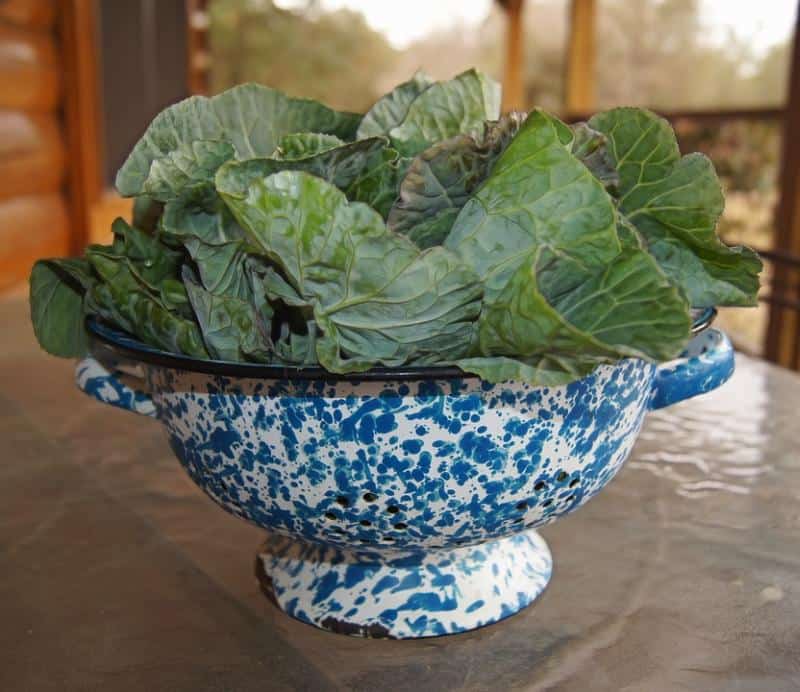
#1. Collard Greens
Collard greens are a staple of the South, and not only does one cup of greens contain 266mg of calcium, but they are also a fantastic source of vitamin C and beta carotene.
Although collard greens are traditionally grown in the South, they are a cool season vegetable, so do well in more northern areas too, except that you would need to harvest them in the late summer or early fall, rather than through the winter.
However, they are are surprisingly winter-hardy, and are not only tolerant to frost, but improve in flavor after being subjected to a few frosts. They are almost as cold-hardy as kale and cabbage, surviving temperatures down to 15 degrees Fahrenheit. The only reason that they are grown in the South is because they are also heat-tolerant.
Although collard greens need a fair bit of space in the garden as they grow quite large, the reward is an abundant supply of nutritious greens throughout the growing season.
While collard greens are traditionally slow-cooked with bacon or ham, they are actually an extremely versatile ingredient, and can be used in the kitchen in several different ways:
- Blanched and then used as a wrapper for everything from enchiladas to gluten-free lasagne noodles
- Chopped and blanched, before added to soups, stews and casseroles
- Paired with legumes and spices
- Sautéed with garlic and herbs
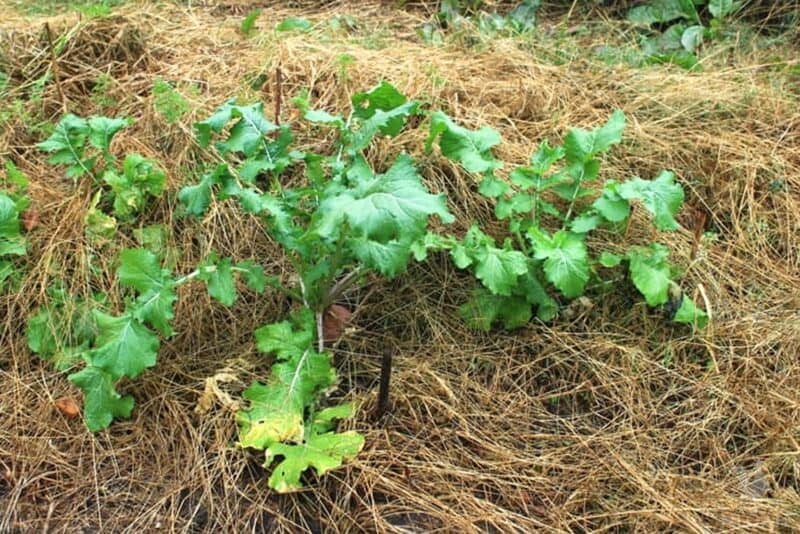
#2. Turnip Greens
Turnip greens are actually quite similar to collard greens, with the main differences being that turnip greens are slightly sweeter, smaller and more tender than collards.
Just like collard greens, turnip greens are packed with nutrients, including 250mg of calcium in one cup of greens, and also contain lutein, a key antioxidant.
Again, just like with collard greens, turnip greens are a cool-weather crop, and actually turn bitter when exposed to too much heat.
One of the main advantages to growing turnip greens is that you also get the turnip root, extremely nutritious, and tasty.
However, if you want your turnip plants to focus their energy on the greens, rather than the roots, here are some of the best varieties to grow:
- Seven Top – this variety produces a large crop of dark green leaves after about 40 days from sprouting
- Alltop – small roots with large, fast-growing leaves
- Topper – slow to bolt and flower, meaning that leaves are produced for a noticeably long time
- Shogoin – while the white roots are quite large with this variety, the leaves are extremely tender and are mild enough to eat raw on their own
In terms of recipes, collard greens and turnip greens are quite interchangeable, but, whichever one you happen to be cooking, it is important to remember never to overcook the greens, because not only will this degrade their taste and texture, but it will also cause the loss of many of their most important nutrients.
#3. Kale
Just a few years ago, kale was thought of to be quite an obscure vegetable, and was really only used as a garnish. However, this humble brassica quickly soared in popularity, and is now not only touted as a more nutritional alternative to cabbage, but is also frequently referred to as a superfood.
In addition to each cup of kale containing 94mg of calcium, you will also find several other nutrients within this green, from fiber and potassium to iron and copper.
Kale is an extremely easy crop to grow, with many favoring it over cabbage. It’s a cut and come again crop, meaning that you are only likely to need a few plants to keep you supplied with kale, not only through the summer but also the winter months.
It’s also an ornamental vegetable, with different varieties producing leaves that vary significantly in size, color and texture.
Here are a few kale varieties to consider:
- Common Curly Kale – the most popular variety, the curly leaves make it harder for pests to lay eggs within them
- Cavolo Nero/Tuscan Kale – an Italian variety with dark green, slender leaves with plenty of texture
- Red Russian Kale – an heirloom variety with a purple/red color that intensifies in the cold. Tends to be sweeter and more tender than curly kale
- Siberian Kale – one of the most cold-hardy varieties, this one has huge leaves and is extremely pest-tolerant
- Sutherland Kale – a rare variety from the north of Scotland, this is another kale that is extremely cold-hardy
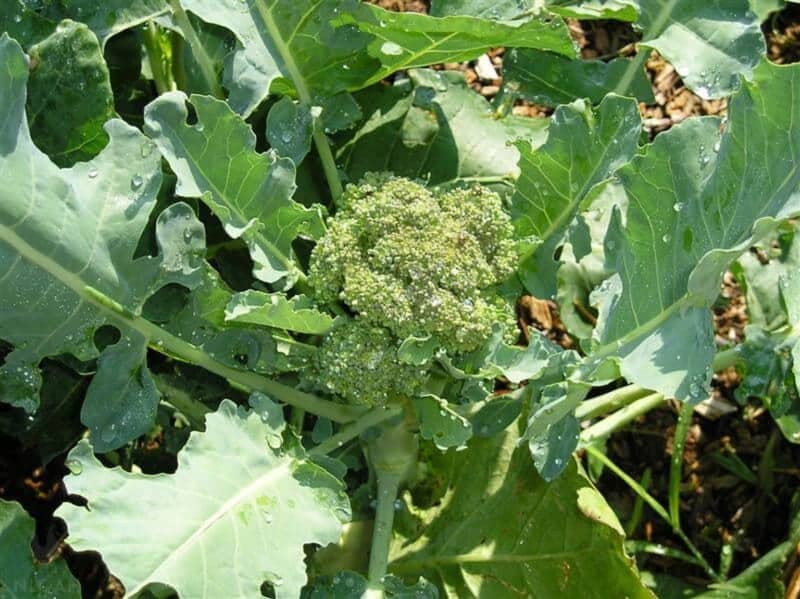
#4. Broccoli
Broccoli is another brassica, often referred to as a super vegetable, because it has an incredibly high concentration of nutrients, including 95mg of calcium in one cup.
In fact, one ounce of broccoli has the same amount of calcium in it as one ounce of milk. Broccoli also contains high levels of sulforaphane, which is a compound that has been proven to be effective at fighting a number of diseases.
Broccoli is a cool-season crop, so it can be grown either in the spring or the fall, although making use of succession planting will ensure you a supply throughout the growing season. Due to the cooler weather, the broccoli you grow in the fall will likely be larger and tastier than the one grown in spring.
One of the keys to growing the best tasting broccoli is knowing when to harvest it. You only have a window of about 3-4 days to harvest your broccoli, and waiting too long will cause the heads to flower, diminishing its taste.
While broccoli is technically an annual, many homesteaders have had success growing it as a perennial. The secret is to plant sprouting varieties of broccoli, although you may need to experiment with a few before you find one that sticks around year after year.
#5. Broccoli Rabe
Also known as rapini, broccoli rabe actually belongs to the turnip family, but acquired its name because of the way it produces florets that look so similar to broccoli. Broccoli rabe also does not taste like broccoli, and instead has a more mustard-like flavor, with a slight bitterness that actually works with it really well.
Another way in which broccoli rabe differs from broccoli is in its flowers. With broccoli, the flowers negatively effect the flavor of the vegetable, while broccoli rabe flowers are not only edible, but are actually quite delicious, with a distinct nutty flavor. In terms of calcium, you will find 100mg of calcium per serving of broccoli rabe.
There are two main types of broccoli rabe out there. The first is a larger and leafier plant, which is grown in the fall and then overwintered, before being harvested in the spring. The second type is smaller, but spreads quite rapidly, and matures in just two months.
This is quite a cold-hardy plant, and while it may look as though they are really suffering during a winter of heavy freezes, they bounce back quite vigorously in the spring.
When cooking with broccoli rabe, you’re best off sauteeing or braising it, as this makes them extremely tender, while giving them the opportunity to really soak up the other flavors that you are cooking with.
This video will show you how to use broccoli rabe in a few classic recipes:
#6. Butternut Squash
While there are so many different types of squashes out there, it is butternut squash that is the richest in calcium, with 84mg of calcium in a cup of butternut squash. Butternut squash also contains more potassium than a n equivalent quantity of bananas, as well as vitamin E, thiamin, niacin, and a wide range of other essential nutrients.
Although butternut squash is a winter squash, its growing season only really begins once all danger of frost has passed, as the plants are quite tender, and even a slight frost will kill any seedlings.
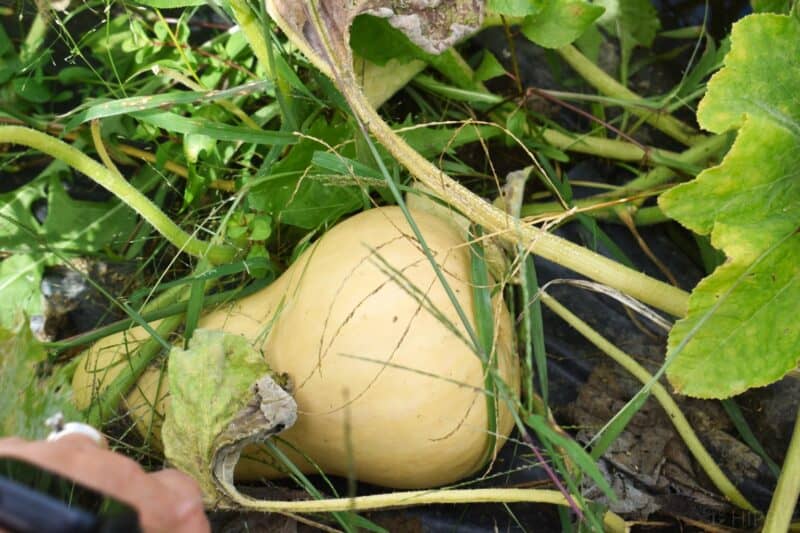
There is one aspect to growing butternut squash that puts many gardeners off, and this is the amount of space that they require. The vines that each plant send out can be up to fifteen feet long, meaning that they could easily and quickly take over your whole garden.
Fortunately, there are compact bush varieties, such as Barbara, that you can grow. These are perfect for containers, and while you will still need a relatively large pot, around 18 inches in diameter and depth, the plants are much easier to control.
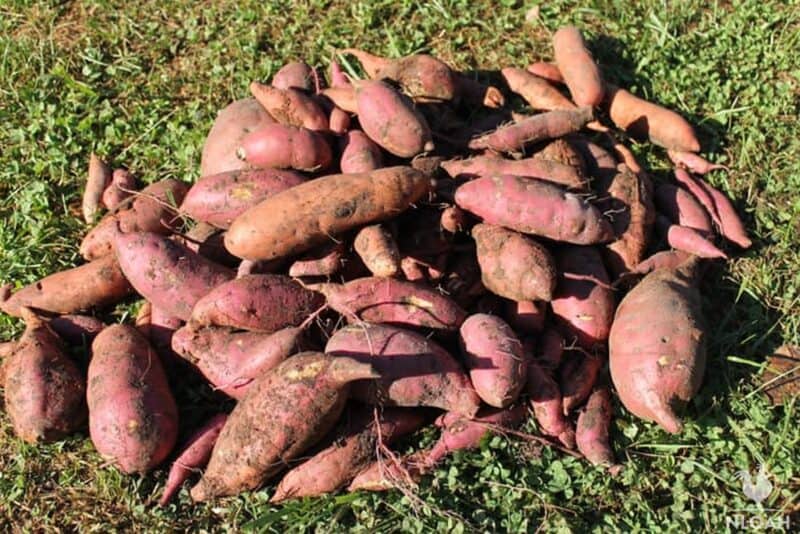
#7. Sweet Potato
While sweet potatoes are traditionally grown in warmer climates, there are now new cultivars that mean that even those in colder areas will be able to easily grow this popular crop.
Compared to the normal garden potato, a sweet potato contains around 1.5 times more calories, and vitamin C. One cup of sweet potato will also provide you with 76mg of calcium, as well as other essential nutrients.
When it comes to growing sweet potatoes for the first time, you have a couple of options:
- Growing them from cuttings – technically called slips, these are not actually rooted, and can be purchased via mail order, usually from the spring months onwards
- Purchasing shop-bought tubers – since these are usually treated and sprayed, they need to be cleaned well before planting. They will also be less hardy than plants grown from cuttings, and less likely to survive outdoors
#8. Globe Artichokes
Globe artichokes are a perennial plant, and are just as magnificently ornamental as they are tasty. With architectural, silvery foliage, and large purple flowers that grow atop tall stems, these plants can grow over three feet high, and up to two feet wide, meaning that they need plenty of space in the garden.
If you do find somewhere to put them, they will reward you by becoming more and more prolific each year.
Plants grown from seed can flower in the same year, but, for a guaranteed harvest, you are best off beginning with suckers.
In the vegetable world, globe artichokes are considered to be quite the delicacy, and have a unique flavor that make them adaptable to many dishes. Artichokes can be roasted, grilled, stewed, or even eaten raw, and just one large artichoke will give you 71mg of calcium.
#9. Bulb Fennel
Also known as Florence fennel, bulb fennel is a perennial herb, and the entire plant can be eaten. However, it is the actual bulbs that are going to be your best calcium source, with one medium-sized bulb containing 115mg of calcium.
Bulb fennel’s name is actually slightly misleading, because the bulb produced is actually just the swollen stem base, but, whatever the case may be, this plant is actually quite easy to grow.
What puts many off about bulb fennel is not knowing how to prepare and cook it. If you want to obtain as much calcium as possible from the bulb, eating it raw is best, but make sure that you slice it thinly, otherwise it can be quite fibrous.
When preparing it to be eaten raw, remove the core, because although this may be edible, it can be quite tough unless it has been cooked.
This video will show you exactly how to cut a fennel bulb:
Here are a few bulb fennel dishes that you can try:
- Thinly sliced and raw in a salad
- Cut into wedges and roasted, before being topped with Parmesan
- Par-boiled, coated with egg and breadcrumbs, and then pan-fried until crispy
- Layered into a potato gratin
- Blitzed into a soup, such as tomato-fennel or carrot-fennel
- Creative desserts, such as candied fennel or fennel panna cotta
Bulb fennel still does produce feathery leaves, and these can be used as a herb, while the seeds can also be cooked with.
#10. Chia
Chia seeds are something that many homesteaders use, but never actually consider growing themselves. With the seeds being sold at quite a high price in stores, this is something definitely worth trying to grow at home.
The chia plant itself is actually surprisingly easy to grow. An annual herbaceous plant, chia does require warmer temperatures to grow.
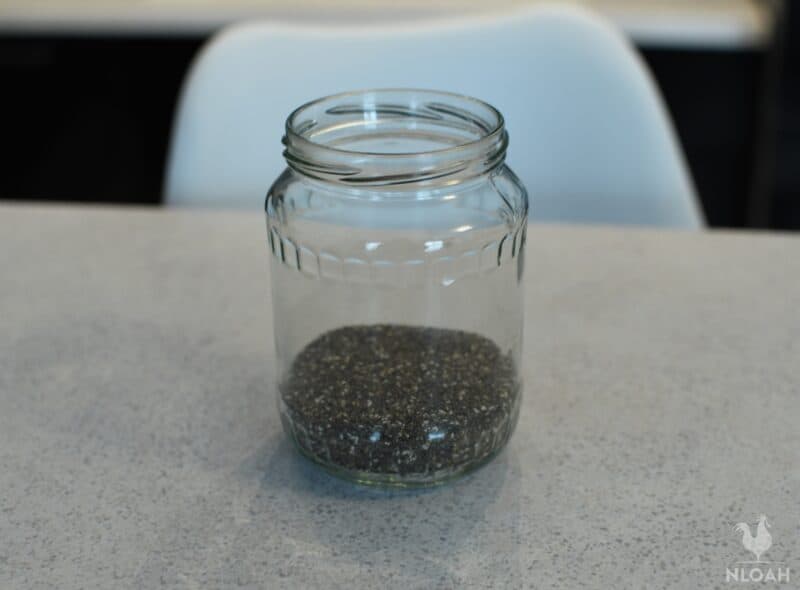
If you live in a northern region, you may need to grow chia under cover, unless you start them off early indoors and have a long, hot summer. This is to ensure that the plant flowers and sets seed, but, even if it does not, the leaves do provide some health benefits of their own.
You do need to keep in mind that the chia plant grows much larger than other herbs, and do produce a prolific amount of leaves, so will need a fair bit of space in order to thrive.
However, it is the seeds that you want for calcium, as just three tablespoons of chia seeds provides 233mg of calcium, almost the same as one cup of milk. Chia seeds are also a great source of essential fatty acids, while providing the body with enough energy to sustain it for around 24 hours.
#11. Sesame
Being a warm-season annual, sesame is another plant that requires warmer conditions to thrive, taking up to 80 days to produce mature seeds. However, you still can grow it in areas with a shorter growing season, but you will need to start the seeds indoors, about six weeks before the last expected spring frost.
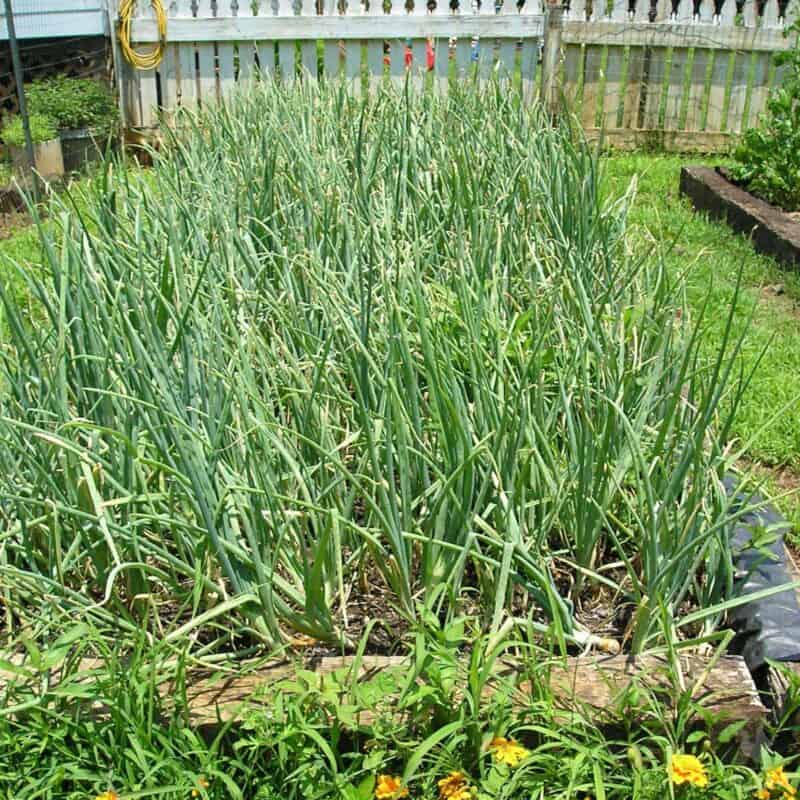
If you are able to give them a long enough growing season, the plant can grow to up to nine feet tall, meaning that they do require quite a bit of space in the garden.
However, all of the effort will be worth it, as one ounce of sesame seeds will provide you with 35mg of calcium, as well as a high amount of copper, manganese, and other key nutrients.
#12. Spring Onions
Also known as scallions, spring onions are quite an easy crop to grow, as they do not really require much maintenance at all. Many people do not realize that spring onions are actually quite a good source of calcium, with 72mg of calcium per cup of spring onions.
Spring onions can be sown directly where you want them to grow, with most varieties being ready for harvest in just eight weeks.
While some varieties can be left in the ground for longer, for them to grow larger bulbs, you do have to be careful that they do not start bolting, as this will ruin their delicate flavor.
If you already love spring onions, try adding a few different varieties to your garden next season:
- Spring Onion White Lisbon – this is the most popular variety, with a short cropping time and great for overwintering
- Spring Onion Pompeii – a rounder shaped bulb that makes them perfect for pickling
- Spring Onion Apache – a red colored spring onion with a good flavor and a crisp texture
- Spring Onion Deep Purple – violet colored with large, torpedo-shaped bulbs
- Spring Onion Shimonita – a Japanese dual-purpose variety, as they can be left in the ground to mature into leek-like plants
- Spring Onion Holland Blood Red – a crimson red color with a delicious, mild flavor
Spring onions are such a versatile ingredient, and can be used either as a garnish for just about any dish, or as the star of a dish themselves.
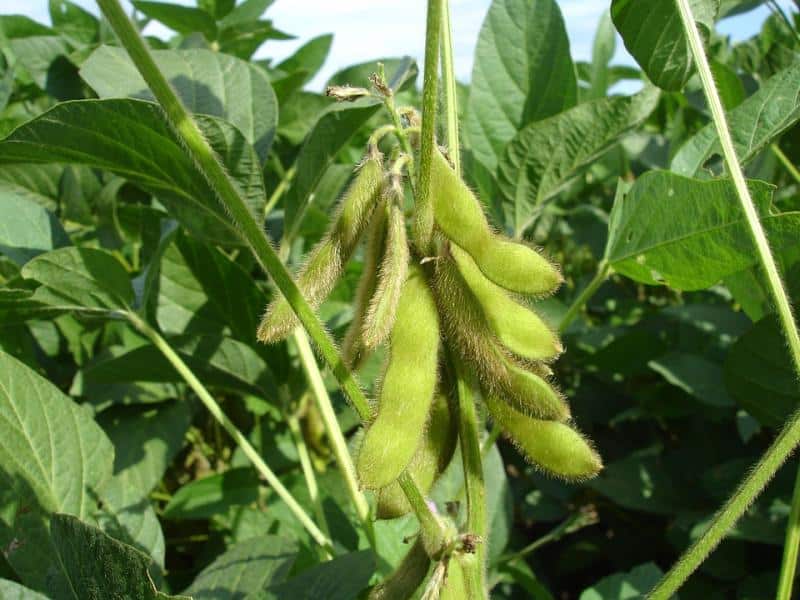
#13. Soybeans
While soybeans do require quite a hot climate to grow in, there are now a few varieties that will adapt well to northern regions. They do still require warmer temperatures to germinate, so you will need to either start them off indoors, or wait until the spring.
Soybeans take around 90 days to mature, although the varieties bred for colder climates may mature even faster. However, the beans can be picked while they are still immature, and these are what you likely already know as edamame, a popular Japanese snack.
Even if your soybean plants do not really amount to much, this is still a crop worth trying to grow, as it also serves as a green manure, adding nitrogen to the soil.
If you do manage to harvest some soybeans, you will be happy to know that one cup of soybeans contains 175mg of calcium, as well as plenty of other important nutrients.
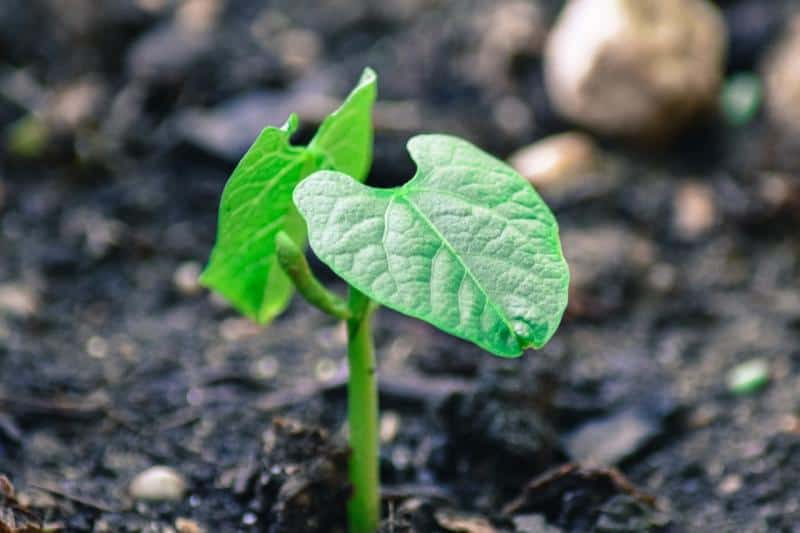
#14. Navy Beans
Navy beans are actually white in color, but are known as navy beans because they were a staple food for the United States Navy in the early 20th century.
The beans themselves are quite small, about the size of a pea, and are relatively mild in flavor, but the plants can still grow up to two feet in height.
Navy beans can be difficult to find in stores in many areas these days, making it worth trying to grow them yourself at home. Considered to be one of the healthiest foods in the world, one cup of navy beans contains 125mg of calcium, as well as fiber, protein, folate, manganese, and many more nutrients.
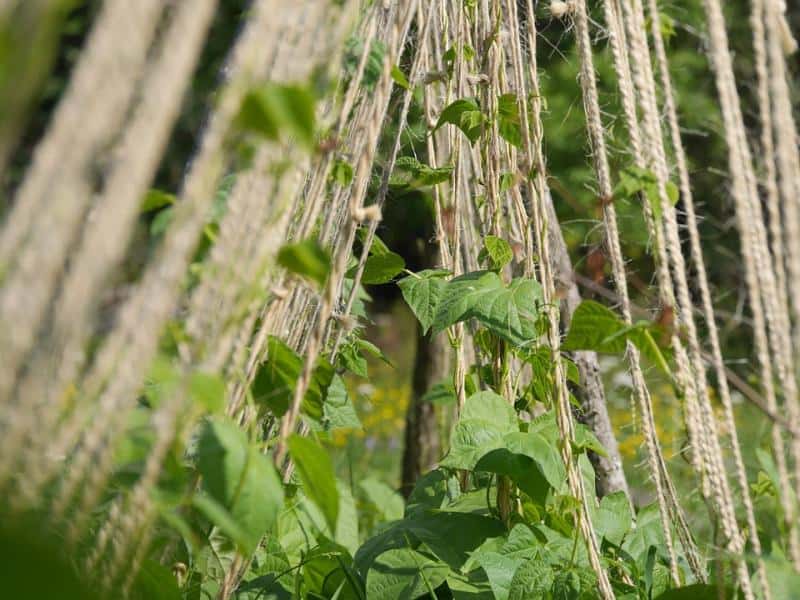
#15. Black Turtle Beans
While they may look completely different, black turtle beans are actually a variation of green beans, which is more visible when the plant is still young. However, unlike green beans, one cup of black turtle beans will provide you with 102mg of calcium.
Black turtle beans are classified as dry beans, because they are only harvested once they are dry. However, when growing, they are just like any other bean plant, with trailing vines and spade-shaped leaves.
#16. Mustard Greens
Mustard greens are incredibly nutritious, not only containing 165mg of calcium per cup of greens, but also having a high content of vitamins A, C, E and K. They are wonderfully flavorful, with a spicy kick that makes them pair so well with milder greens.
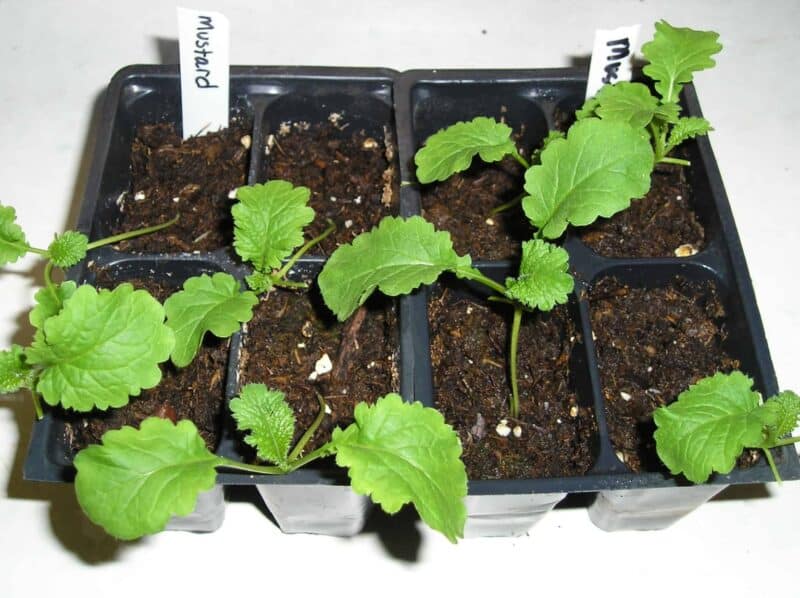
The plants look a bit like spinach, and require cooler temperatures to grow, making them a great crop to grow in the spring or the fall. While they do not need much maintenance, they do require about two inches of water per week, so you may need to top them up with some additional watering.
Harvest your mustard greens while they are still young, because it does not take long for the leaves to start becoming tough and bitter.
While most people tend to use mustard greens in salads, there are actually many ways in which you can use this vegetable in the kitchen:
- In omelets and other egg dishes
- In casseroles and stews
- Indian style, with garlic, ginger, onion and chili
- Italian style, with garlic, red pepper, and red wine vinegar
- Stir fried into Asian dishes
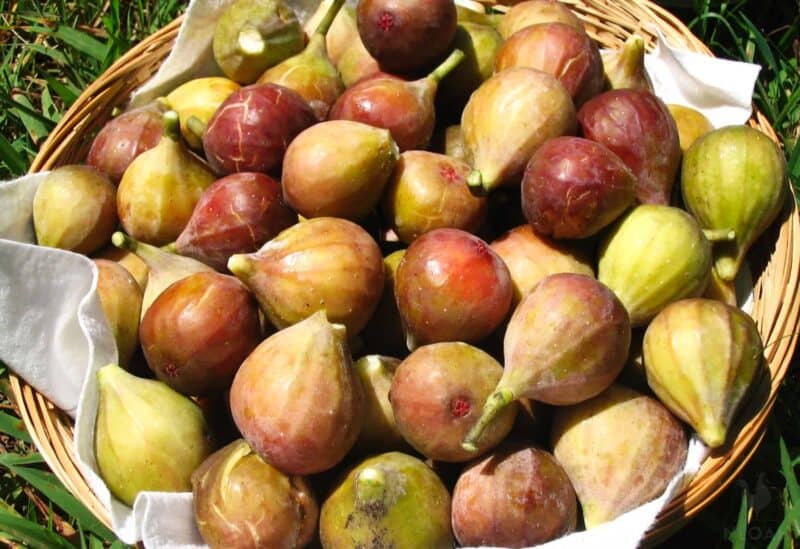
#17. Fig Trees
Fig trees belong to the mulberry family, and originated in Persia. They do need a warm and sunny position to grow in, but, often, placing a tree by a south-facing wall is more than enough.
They are easily grown in containers, which is perfect for those who experience extremely cold winters, as you will need to either bring them in or provide them with some protection.
Having just one fig tree should provide you with all the figs that you need, and if you are growing the tree in an unheated greenhouse rather than outdoors, you will likely be able to enjoy two crops, rather than one, over the summer months.
Here are a few varieties you could try growing:
- Brown Turkey – the most successful variety for cooler climates, with heavy crops
- White Marseilles – good for growing under glass, with large, sweet fruit
- Osbourne Prolific – another greenhouse variety for cooler climates, with dark purple fruit
- Brunswick – quite a hardy variety, making it great for growing outdoors
Eating half a cup of figs will give you 120mg of calcium, although if you grow your own, you are likely to end up eating many more of these fresh, sun-warmed fruits in one sitting. When dried, figs retain their calcium content, making this a great way to ensure you have a plant-based calcium source throughout the winter months.
#18. Oranges
While citrus fruits do need warmer climates, they can easily be grown in pots, so that they can be brought in during the winter months in northern areas.
If you look after them properly, you will be rewarded with beautifully fragrant flowers in the spring, followed by a crop of oranges later in the year, with each orange containing around 60mg of calcium.
Being quite hungry plants, orange trees require regular feeding throughout the summer months, with a high nitrogen summer feed. They also require regular watering, ideally with rainwater.
A few the orange tree varieties that do well in cooler climates:
- Satsuma Mandarin – the most cold-tolerant mandarin cultivar
- Moro Blood Orange – smaller trees with oranges that have a slight berry flavor
- Ten Degree Tangerines – developed in Texas, these were named for their hardiness and produce a fruit that is fairly tart
However, while these varieties may be more cold-hardy than others, they will still only survive down to temperatures of around 10 degrees Fahrenheit, so will likely still need protecting in the winter.
#19. Amaranth
Amaranth is a beautifully ornamental plant, with gorgeous flowers, and is actually edible too. This vegetable is extremely fast-growing, and can be harvested, using the cut and come again method, in just 30 days.
Both the leaves and the seeds are edible, with the leaves being comparable to spinach. In terms of the seeds, these are tiny and are eaten like a grain, being similar, in a way, to quinoa.
However, amaranth is definitely nutritionally superior than other grains, not only containing an impressive 275mg of calcium per cup, but also protein, fiber, iron and folate.
One thing that puts many people off is not knowing how to use amaranth seeds, so here are a few ideas for inspiration:
- Mix them with quinoa and polenta for a breakfast porridge
- Turn them into a soup, such as a sweet potato-amaranth soup
- Mix them up with aubergines to make veggie burgers
- Add them to stews and casseroles
- Mix them with other vegetables to make fritters
- Use them in desserts, from raw chocolate bars to puddings
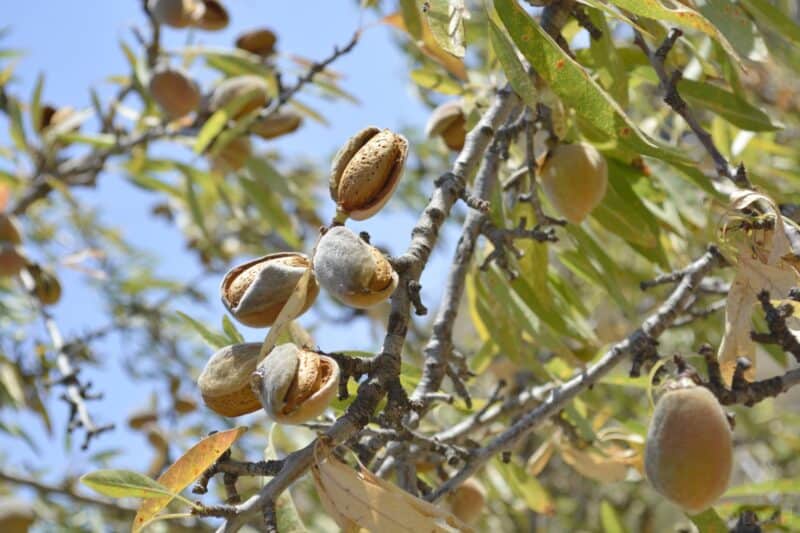
#20. Almond Trees
Almonds are a fantastic source of calcium, with one cup of almonds containing 378mg of calcium, as well as so many other nutrients. While almond trees are easy to grow, they do require warm and dry summers, as well as frost-free winters.
This means that gardeners in northern areas will have a hard time growing almond trees, unless they opt for a dwarf variety and grow this indoors. There are many self-pollinating varieties that produce quality, sweet almonds, and will not grow taller than one and a half meters.
If you have any go-to plants that you grow as a calcium source, let us know in the comments section below.
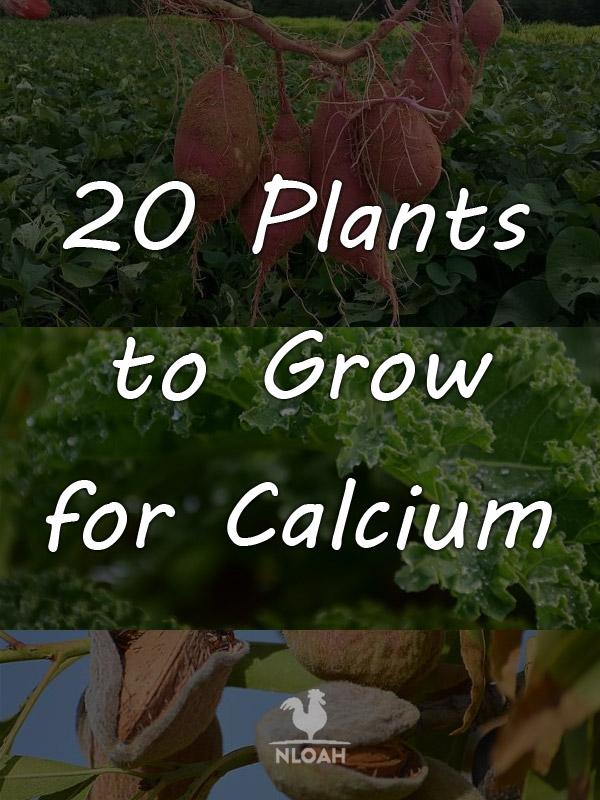

Alina was a born and bred city girl, until she moved to the Scottish countryside in 2013 to live the self-sufficient life. Thrown in at the deep end, she spent all her time learning as much about homesteading as she could, putting theory into practice each and every day. T
oday, Alina grows large amounts of food in her garden, greenhouse and polytunnel, and also has a number of different animals that call her little farm “home”.

Calcium is important for laying hens, so I’ve often grown kale for them and frequently grab a handful of stalks on my way through the garden on my way to do the ‘chicken chores’. It’s a really easy one to grow. I like the Curly Scotch Kale.
I would like to try doing this for calcium, but I’m on warfarin doesn’t allow me to eat the greens & most of these are green. I do eat oranges, sweet potatoes, re. potatoes. Used to have chia, but that is an absolute NO NO while on warfarin!! Can you add any other foods? I can’t do figs or almonds. Thank You